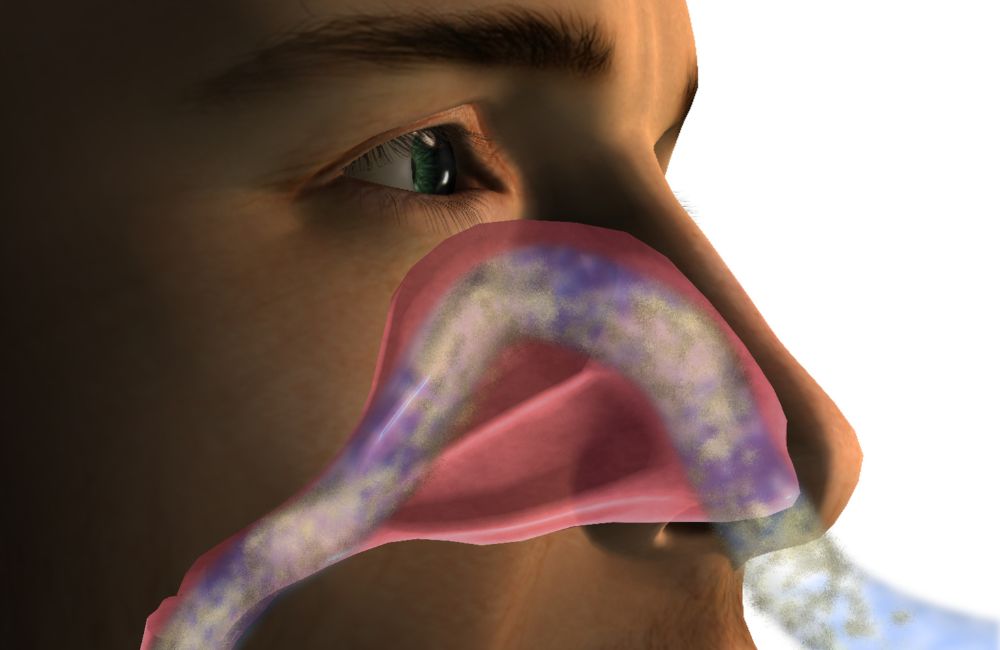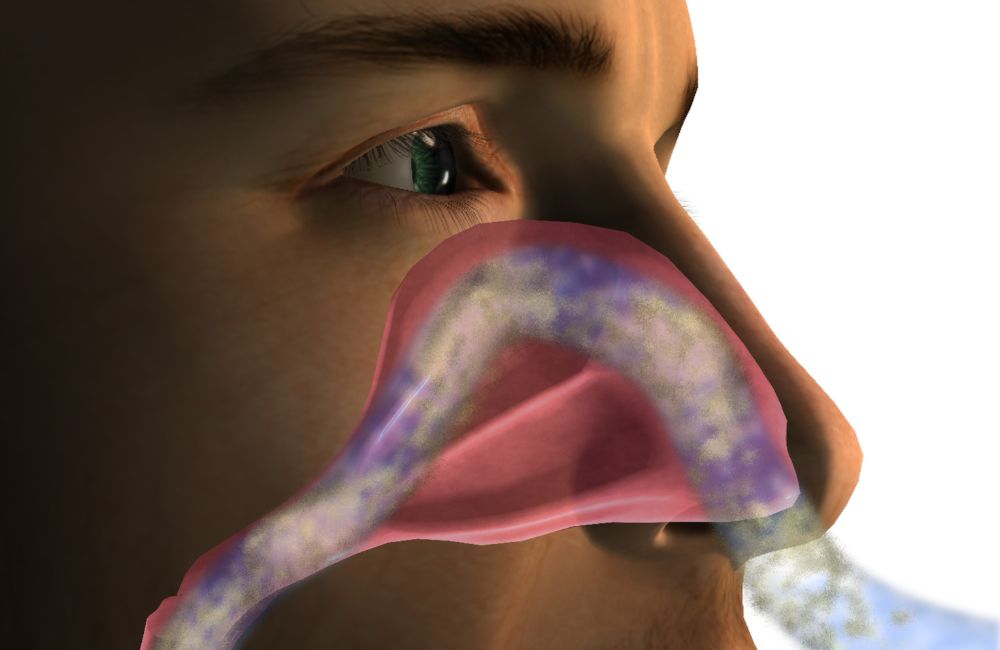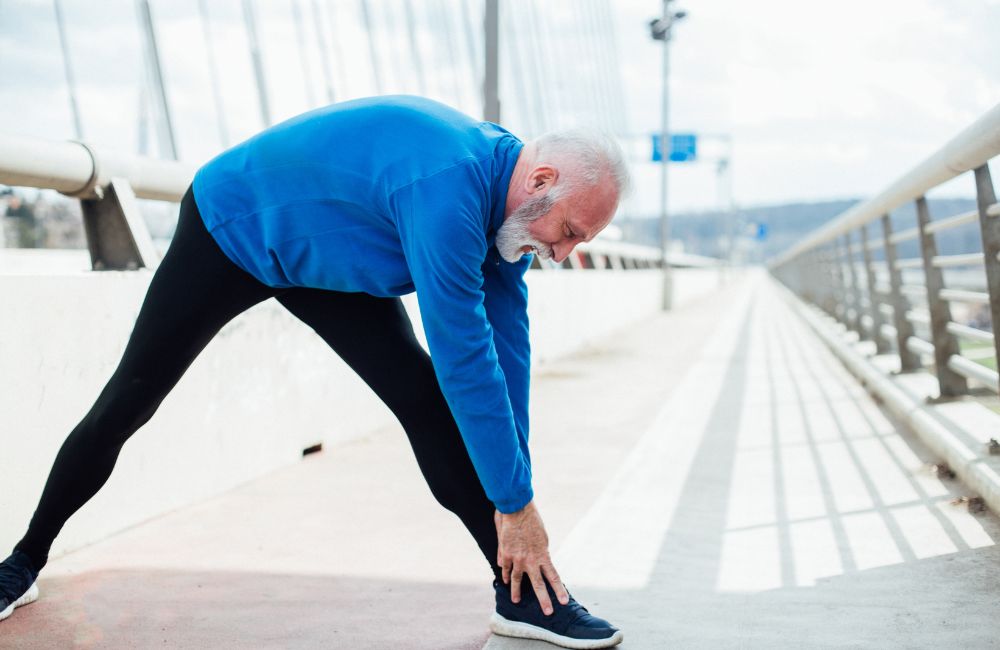
Suffering from high blood pressure? New study discovered a 5-minute breathing exercise that can lower your blood pressure.
The best part is, it’s just as effective in regulating your blood pressure levels as medication, according to the study.
High blood pressure is a rising problem that affects more than 45% of the U.S. population, or roughly 108 million people.
When not managed, it can lead to serious diseases like heart diseases and strokes.
This simple time-efficient strength training exercise for breathing muscles can help lower blood pressure and improve vascular health.
High-Resistance Inspiratory Muscle Strength Training is a method known as IMST.
It’s a form of breathing muscle strength training that’s as effective as aerobic exercise or meds for improving cardiovascular health, according to new science (3).
You’ll also like:
If You Can’t Do This Simple Test In 1 Minute, Your Heart Is Not in Good Shape
What Is IMST?

Often when we think of “living a healthy lifestyle” our diet, daily exercise, sleep schedules, financial wellbeing, social status, and family life comes to mind.
The American Heart Association recommends that adults get 150 minutes of moderate exercise or 75 minutes of vigorous exercise per week (1).
These lifestyle changes can improve nervous system function and optimize heart health.
Although exercise is a vital component of staying healthy, we rarely consider our health on a cellular level.
Breathwork is a novel form of therapy that refers to a variety of different breathing exercises that are meant to change your mental and physical well-being (2).
Coherent breathing and resonant breathing are both forms of IMST and are used to describe breathwork that involves changing the pattern or speed of your breath.
These practices are commonly used in meditation and yoga practices to improve stress response.
Inspiratory muscle strength training (IMST) is a form of breathwork that uses resistance training to improve the strength of the muscles that help you breathe.
A new study in the Journal of the American Heart Association states that IMST is a safe way to improve blood pressure and vascular endothelial function in older adults (3).
Because IMST only takes 5 minutes, it is likely to have a higher adherence rate than regular exercise and is a great stepping stone to better physical health.
Hypertension and Its Risks
Hypertension, also known as high blood pressure, is a very common condition among adults in the United States.
Before diving into the risks of high blood pressure, it is important to understand normal blood pressure and its impact on good heart health.
Blood pressure is recorded with two different numbers.
Systolic blood pressure (the top number) indicates the amount of pressure blood exerts on the artery walls during a heartbeat.
Diastolic blood pressure (the bottom number) indicates the pressure when your heart is at rest between beats.
The different classifications for healthy and unhealthy blood pressure according to the American Heart Association are as follows:
- Normal: <120 mmHg /<80 mmHg
- Elevated: 120 mmHg/<80 mmHg
- Stage 1 Hypertension: 130-139 mmHg/80-89 mmHg
- Stage 2 Hypertension: >140 mmHg/80-89 mmHg (4).
Anything greater than these values could pose a serious physical threat to your heart and should be evaluated by a qualified clinician immediately.
For those at high risk, it may be beneficial to own a home blood pressure monitor.
Uncontrolled Hypertension
Uncontrolled hypertension can put you at high risk for heart attack and stroke, the leading causes of death in the US.
In 2018, nearly half a million deaths in the US included hypertension as a leading or contributing cause, and only 1 in 4 adults have their hypertension under control (5).
Additionally, about 30 million adults are recommended to take high blood pressure medication.
Medications, hospital visits, and other hypertension-related costs have racked up a bill of about $131 billion each year in the United States.
Despite these unfortunate statistics, hypertension is still incredibly common among adults.
Without being tested, it can be hard to detect high blood pressure in your own body.
Symptoms can include headaches, shortness of breath, chest pain, fatigue, dizziness, confusion, or difficulty breathing.
However, there are often no symptoms until your blood pressure reaches a life-threatening level, so it is important to get regularly checked by your doctor.
If heart disease runs in your family, it is very important to stay on top of blood pressure.
Hypertension can develop for a variety of reasons including diabetes, obesity, pregnancy, kidney disease, poor cholesterol management, and even excess salt intake (6).
As mentioned previously, chronic hypertension can increase the risk of heart attack, heart disease, and stroke.
Among these risks is also the development of atherosclerosis, the hardening of the arteries.
Atherosclerosis in addition to high blood pressure can lead to a variety of unfavorable health conditions and make for poor overall quality of life.
What Studies Have Found
In the past, the best breathing exercises were often associated with diaphragmatic breathing, slow breathing, or mindful breathing.
Usually, these themes are used in meditation or yoga practices and are associated with a state of relaxation.
However, breathing to lower blood pressure is a new advancement and has shown to have similar or better effects on blood pressure than exercise or medication (3).
The Department of Integrative Physiology at the University of Colorado, Boulder conducted a new study detailing how strengthening your breathing muscles can improve systolic blood pressure.
The study consisted of a 6-week clinical trial that looked into the effects of high-resistance inspiratory muscle strength training on adults aged 50 to 79 with a history of high blood pressure.
Both groups in the study used a resistive breathing device called a POWERBREATHE K3. The IMST group trained with up to 75% resistance on the device, while the control group performed a “sham” of the exercise, and trained with very little resistance (3)
The IMST treatment group was instructed to perform 5 sets of 6 breaths with a 1-minute rest between sets. This breathing pattern was to be repeated 6 days per week for 6 weeks.
The control group trained at a much lower intensity of resistance but was to complete the same deep breathing technique for the same amount of time.
The study found that the group who performed high-resistance IMST had significantly decreased systolic blood pressure from 135 to 126 and improved endothelial function (3).
In addition to this finding, the participant’s adherence to the training program was incredibly high at a 94.4% consistency rate as opposed to the regrettably low adherence rate of physical activity in the United States (3).
There are a lot of lifestyle strategies that promote good heart health, but breakthroughs like this study prove that something as simple as purposeful and mindful breathing can help to reduce blood pressure.
Exercise vs. IMST
Resistance and aerobic exercise have known benefits to improve health and overall quality of life.
For example, the aerobic exercise guidelines for Americans state that at least 150 minutes of moderate aerobic exercise can lead to health benefits (1).
Some of these benefits may include, weight loss, increased cardiovascular health, and reduced stress hormone, cortisol.
Regular physical activity makes your heart stronger, and a stronger heart can pump blood throughout our bodies with less effort.
This helps to decrease the force on your arteries and improves heart health.
Aside from exercise, medical advances have allowed us to manage blood pressure safely and effectively.
Blood pressure medications work in several different ways. Some of these drugs cause your body to get rid of water, which decreases the amount of salt in your body to a healthy level.
Others can work to relax your blood vessels, make your heart beat with less force, or block nerve activity that would prevent relaxation (7).
Although it is so common to prescribe exercise, a healthy diet, and blood pressure medications, sometimes these options are not attainable for everyone.
Breathing Techniques to Lower Blood Pressure
Luckily, breathing techniques to lower blood pressure are a safe and easy way to take control of your health from your own home.
As mentioned in the study above, high-resistance IMST had a much higher adherence rate than regular physical activity.
In fact, less than 40% of adults meet the guidelines for aerobic exercise (3).
Low adherence may be due to a lack of transportation, financial costs of a gym, or the fact that exercise can take a lot of time.
Additionally, it can be difficult for people with physical injuries or other health conditions like asthma and COPD to get sufficient exercise throughout the week, so IMST can offer similar health benefits without the risk of injury.*
In addition to physical health and adherence, IMST can also provide benefits for stress management.
The American Institute of Stress(AIS) states that chronic stress can affect various systems of our bodies (11).
With the recent stress of the Covid-19 pandemic, our mental health must become a priority to keep our bodies healthy.
*It is important to note that one should not stop taking their blood pressure medication or cease physical activity with the start of IMST.
As mentioned above, physical activity can provide benefits far beyond lowering blood pressure. Always talk to your doctor or physical therapist before stopping any medication.
How The Breathing Exercise Works
The deep breathing techniques discussed above have all been performed in lab settings or with expensive equipment, so let’s learn how to perform this exercise at home.
Lead author Daniel Craighead, and lead scientist of this IMST study, describes this deep breathing exercise not as a state of relaxation, but more of an intentional exercise.
Usually, when assessing lung function, tools like the POWERBREATHE k3 are used and can serve as a visualization tool for patients with chronic obstructive pulmonary disease (COPD).
To mimic this type of resistance training, pursed-lip breathing, alternate nostril breathing, belly breathing, and lion’s breath are some of the best ways to practice mindful, slow breathing and strengthen the diaphragm.
Pursed lip breathing is a slow breathing exercise that requires you to deeply inhale, then exhale while pursing your lips to create a small opening.
Pursed Lip Breathing
This simple breathing technique combined with abdominal breathing drastically slows your breathing rate and can provide resistance similar to that in IMST.
Below is a step-by-step routine you can do at home:
- Step 1: Sit upright or lie down in a comfortable position.
- Step 2: Deeply inhale, and feel the air fill up your abdomen and your belly rise.
- Step 2: Purse your lips like you’re blowing on hot food, and slowly exhale for twice as long as you inhale. (Or try equal breathing!)
- Step 4: Repeat this breathing pattern for 6 breaths and return to normal breath for 1 minute. Continue these breath cycles for 5 rounds!
Another deep breathing exercise similar to pursed-lip breathing is alternate nostril breathing.
Alternate Nostril Breathing:
- Step 1: Take your left hand and place it on your knee in a seated, comfortable position.
- Step 2: Rest the tongue on the roof of the mouth and raise your right hand up to your nose and plug your right nostril.
- Step 3: Take a deep breath through your left nostril, then use your fingers to plug your left nostril and exhale through your alternate nostril.
- Step 4: Then inhale through the right side and repeat this for six cycles.
This type of breathing has been shown to improve respiratory system function, improve blood pressure and reduce symptoms of depression (8).
Belly Breathing
Belly breathing is another effective strategy used to strengthen the diaphragm and build a stronger core. To practice belly breathing,
- Step 1: Lie on the ground and place your left hand on your upper chest and your right hand on your abdomen.
- Step 2: Take deep, full breaths and allow your belly to fill with air and your belly rise, followed by a rise in the chest.
- Step 3: Repeat this breath cycle for 6 rounds and return to normal breathing for 1 minute.
Rhythmic breathing like this can trigger the parasympathetic nervous system and cause a relaxation response.
Lion’s breath, a common yoga practice, is another form of chest breathing that can alleviate stress levels and complement abdominal breathing.
While practicing any of these breathing techniques, try to avoid taking shallow breaths or chest breathing as it will not provide the same benefits as big deep breaths, and may cause increased stress levels or an insufficient supply of oxygen to the brain.
Interestingly enough, breathing exercises can immerse you into an intense state of calmness, and a heavy limb sensation, and trigger emotional responses.
Here are some helpful tips for practicing optimal slow breathing exercises:
- Practice these exercises in a room or outside with fresh oxygen. Breathing in stale air can clog airways and cause illness.
- Consider seeking physical therapy to improve technique and effectiveness.
- Download a smartphone app to help track the length of each breath.
- Practice deep breathing by imagining the breath starting at the tip of the tongue and traveling down to the lower belly.
- Syncing your breath with musical tones can help with focus and relaxation.
If at any time you feel lightheadedness or irregular heart rate, stop immediately and consult with your physician.
Long-Lasting Effects
By now, we know that specific breathing exercises can help lower blood pressure, but resisted and rhythmic breathing can do more than just make your body feel good.
Many studies have found that intentional slow breathing can have long-lasting effects on strengthening the diaphragm, the respiratory system, and the autonomic nervous system (9).
Additionally, IMST is shown to have positive effects on endothelial function (3).
Endothelial function controls when your blood vessels contract and relax to help control blood clotting and immune system function.
Endothelial dysfunction is usually treated with pharmacological compounds, but with new medical advancements, we know that IMST can be used as preventative medicine to aid in conditions like this and overall health.
Overall, coherent breathing, a common phrase used to describe the exercises above can help with:
- Decreased muscle tension and pain relief
- Equalized heart rate
- Decreased stress response
- Improved cognitive health
- Improved overall state of mind.
Next time you have five minutes on your hands or catch yourself in a stressful situation, give one of these exercises a try and see what it can do for you!
Summary
The latest advances in science have shown us that a simple 5-minute breathing technique can reduce stress levels, improve health on a cellular level and help to reduce high blood pressure.
Because hypertension is such a common condition, a lot of research has been done to try to find alternate prevention methods and treatments.
Hypertension can cause a lot of unfavorable health implications like stroke, heart disease, or even death.
With the recent covid-19 pandemic, mental and physical health must be a priority.
Regular physical activity provides virtually endless benefits but is not accessible, or even desirable to everyone.
Even the best diets aren’t easy, often cause discouragement, and do not provide all of the same benefits that IMST can.
Breathing exercises to lower blood pressure are a new, but effective and easy way to take the first step toward a healthy lifestyle.
Almost everyone can carve out five minutes of their day to breathe mindfully, and in turn, improve their overall health and increase their lifespan.


